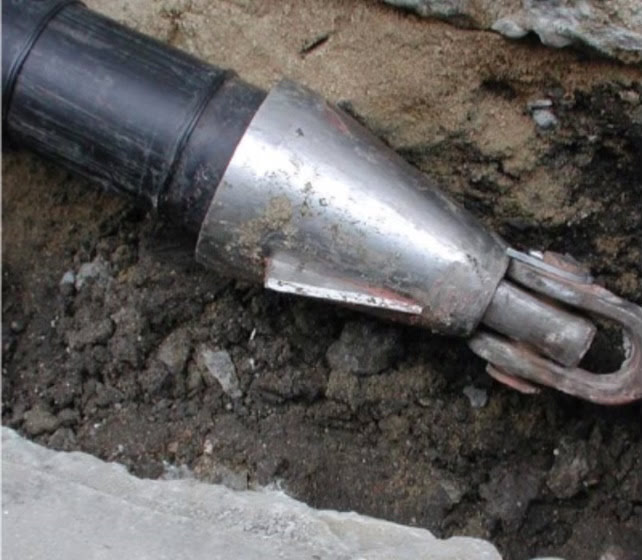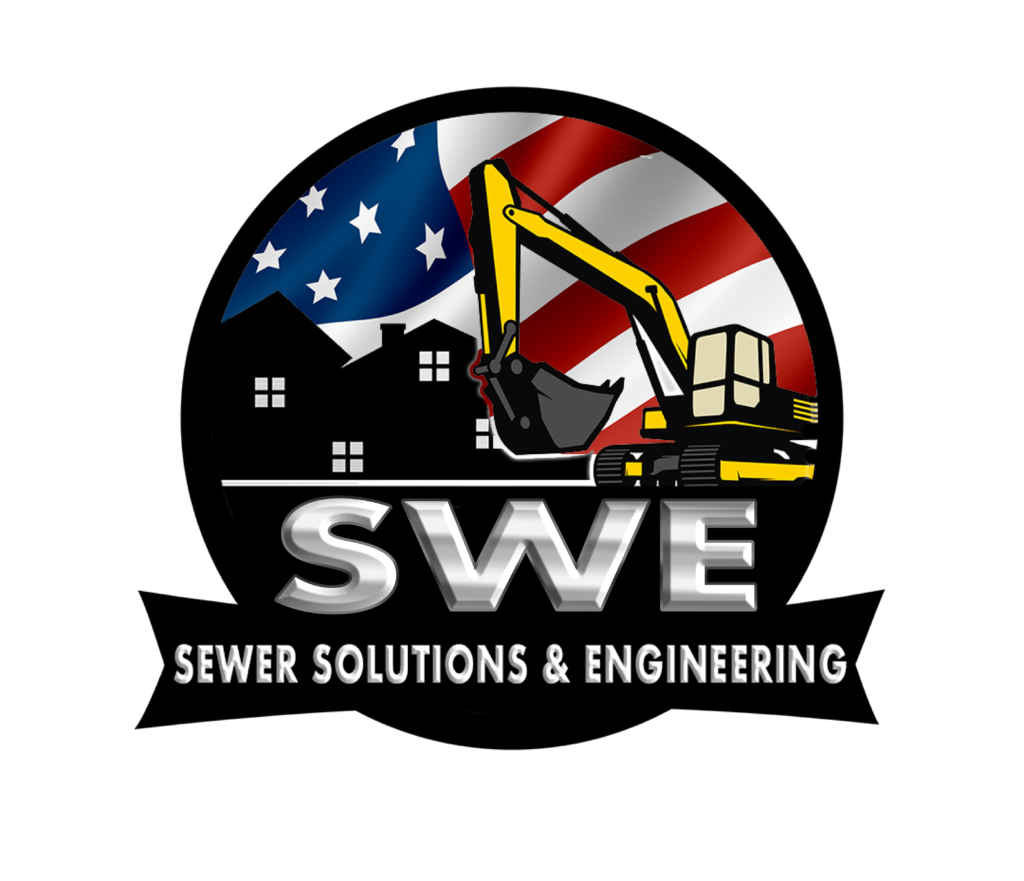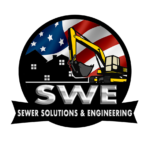Trenchless Pipe Bursting
Trenchless pipe bursting is a method used for replacing or rehabilitating underground pipes without the need for extensive excavation. It involves breaking the existing pipe using hydraulic force and simultaneously pulling a new pipe into place. This process minimizes disruption to the surrounding environment and reduces the time and cost associated with traditional pipe replacement methods. Trenchless pipe bursting is an efficient and practical solution for addressing underground pipe issues.
Residential and commercial trenchless pipe bursting is an excellent way for people to save on labor costs and reduce the amount of excavation needed during residential sewer repair. That being said, if you choose the wrong company for sewer line installation, you may end up with a bigger problem on your hands.
Schedule Service Online
Easy as 1-2-3
How Does Trenchless Pipe Bursting Work?
Pipe bursting is a trenchless pipe repair method used for replacing buried pipelines without the need for a traditional construction trench that involves digging up the entire landscaping around your home or business. Or to avoid the damage that would be caused by digging up the foundation around the property. This pipe-bursting method is very cost-effective and is a way of getting around the high cost of traditional sewer pipe repair methods and minimizing property damage.
Trenchless pipe bursting technology for sewer repair is used when the less invasive operation of pipe lining is insufficient to get the job done. It uses two small entry and exit points above ground that are connected to a new sewer pipe. The old damaged pipe is then burst as the new one moves along the line.
When a pipe bursts, it’s done so with the help of five key pieces of equipment. The expander head sends water into an expanding core which then forces outwards against nearby pipes or vessels to break them apart safely; pulling rods are used for maintaining pressure on either side while technicians work their way along in order to make repairs. If necessary, a hydraulic power pack is used to help operate all this machinery!
Today’s expander heads have a leading end much smaller in diameter than the trailing (bursting) end, small enough to fit through the pipe that will be replaced. With the new leading-end design, we can ensure that your project is completed successfully. The smaller size and improved precision make it easier for you to burst through all of those pipes without any issues!
The leading end of the pipe has “fins” that make first contact with existing pipes. These fins act as a primary breaking point, ensuring you break along all circumference points and not just one spot where stress might be concentrated near transition joints or other areas prone to failure. This method provides a very effective way to make sure the piping is broken along the full circumference.
The receiving pit holds a pulling machine that pulls the expander head and the new pipe is pulled into the line. The heavy, interlocking links form a chain that pulls the head. Each of these links can weigh several hundred pounds. Each weight is close enough to its individual size, so they can be connected with ease by one single technician who has experience in this area of workmanship.
The entire process in the trenchless pipe bursting operation can be powered by one or multiple hydraulic engines. The pipe bursting process is a technique that can also be used to expand pipeline carrying capacity by replacing smaller pipelines with larger pipes. The gas and water industries have invested extensive time into proving this process, which they’ve demonstrated successfully scalable up through 36-inch diameters of pipe replacement!
The Four-Step Process Looks Like This:
- A licensed plumber inserts a specially designed high-resolution video camera into the sewer drain. The camera transmits video back while recording via radio transmission the underground depth and exact physical location of the break or obstruction in the pipe.
- Two small holes are then dug at the entry and exit points at both ends of the problem area.
- The replacement pipe is welded above ground to make sure that no breaks or tree roots will cause the same problem in the future.
- The new pipe is then mechanically pulled through the old pipe – bursting the old and installing the new simultaneously.

Benefits of Pipe Bursting
Less Labor Intensive
When projects involve no digging, it’s a much more efficient process—no big machinery or team of workers will be needed to dig up the yard, and the contractor won’t be doing that either! The length of time to complete the project is much shorter.
Cost-Effective
Pipe bursting will save you money in the end. You won’t need to spend money on workers that would be needed to dig up the entire yard, which could potentially involve demolishing the sidewalk or worse, the foundation around your property. Then, followed by the inconvenience of hiring landscapers and a cleanup crew, you might also have to pay for the costs of replacing the concrete that was removed in order to get to the pipes.
Safer
Excavations are not all that safe. In fact, asbestos and mold are problems often found in plumbing underneath homes. So, when you dig up your sewer lines, this path opens you and your family to a whole host of health hazards and a potentially very bad situation. Hence, pipe bursting is a safer solution than traditional methods and will help minimize the hazard.
Less Damaging
Using sewer line bursting is an environmentally friendly solution to fixing pipes that also causes less damage in the area where you’re working. A smaller mess means less cleanup and repair for homeowners and property management services. This solution is also “greener” than other, more traditional methods of pipe repair.
Is Pipe Bursting A Better Option?
At SWE Sewer Solutions & Engineering, our licensed plumbers know how to safely and effectively use trenchless pipe busting to fix broken and crumbling pipes. That’s why our customers trust us to provide unrivaled, lasting professional service at competitive prices.
Why is trenchless pipe replacement installation the better option?
For starters, it requires very little excavation. Traditional sewer line replacement or repair involves digging massive amounts of dirt and concrete even when the affected section is relatively small.
Additionally, these repairs cost more because of the equipment and manpower used. Trenchless rehabilitation and installation is the better choice because it’s a less invasive process that requires less time on the job and very little disturbance to your yard or driveway.
Trenchless Pipe Bursting Techniques
There are two ways to use trenchless technologies: bursting pipe and hammerhead mole installation. Let’s take a moment to go over the basics of each of these options.
Pipe Bursting: After a video camera inspection reveals the damaged section of the pipe’s location, we determine if pipe bursting is a reasonable option. If the answer is yes, we then draw a new tube through the existing tube.
The new pipe has a metal tip that breaks up the old, damaged pipe as the new tube moves through it and into place. A positive about pipe bursting is that only a small hole needs to be made in the yard’s surface to access the pipe and lay the new one.
Hammerhead Mole: Unlike pipe bursting, the hammerhead mole is a tunneling device. The mole is deployed underground where it tunnels through the soil, creating a pathway through sensitive parts of the yard where a trench isn’t ideal for placing.
Once the tunnel forms, the Hammerhead mole pushes the new pipe through and into place. While this trenchless technology offers budget-friendly options for our customers, it’s not always an option. Soil conditions must be favorable. Your technician will help you determine if your soil meets the requirements.
Embracing Innovation in Sewer Repairs: The Advantages of Trenchless Pipe Bursting
In the world of municipal and residential sewer repairs, trenchless technologies like pipe bursting present a significant innovation, offering minimal disruption to everyday life and reducing the overall infrastructure cost. Trenchless pipe bursting is an advanced method that allows contractors to replace old pipes without the extensive digging that traditional methods require. This technique not only preserves the surrounding environment and structures but also ensures that the utilities continue to function with minimal interruption.
The Mechanics of Trenchless Pipe Bursting
The pipe bursting method involves breaking apart an existing pipe while simultaneously installing a new one in its place. This is typically done using a pneumatic or static bursting system. The process begins by creating small entry and exit pits at the beginning and end of the section to be replaced. A bursting head, attached to a winch via a sturdy cable, is then pulled through the old pipe. This head breaks the old pipe material—be it PVC, cast iron, or clay—while pulling the new pipe, often made of durable PVC or HDPE, into place behind it.
Key Equipment and Materials
Essential to the pipe bursting process is the bursting equipment itself, which includes the bursting head, pneumatic or hydraulic machinery, and the winch. These are critical for both the destruction of the old pipe and the insertion of the new one. Additionally, the use of CIPP (Cured-in-Place Pipe) materials can complement the bursting method. CIPP involves inserting a resin-saturated liner into the old pipe, which then cures in place to form a robust, seamless new pipe within the old structure.
Advantages of Trenchless Pipe Bursting
One of the most significant benefits of this method is its cost-effectiveness. The trenchless replacement pros significantly reduce the need for extensive excavation, thus minimizing the damage to paved areas and landscapes and reducing the cost of material infrastructure. The safety enhancements are also notable; by limiting open trenches, trenchless methods decrease the risk to both workers and the public.
Moreover, the trenchless method is faster than traditional sewer repair methods. This efficiency reduces the time utilities are out of service and lessens the inconvenience to residents. Additionally, this method’s flexibility allows for the installation of pipes with different diameters, which can improve pipe flow and capacity.
Considerations for Sewer Pipe Repairs
Despite its many benefits, trenchless pipe bursting requires careful planning and precision. It is particularly well-suited for sanitary sewer and storm sewer applications but may not be applicable in all scenarios, such as when pipes run very close to other critical infrastructure or in highly congested urban areas. Contractors need to conduct thorough inspections and possibly integrate other techniques, such as slip lining or pipe splitting, depending on the specific conditions and requirements.
In closing, the trenchless pipe bursting technique represents a significant leap forward in sewer repair technology. It offers a way to modernize the existing sanitary sewer frameworks with reduced environmental impact, better safety standards, and more effective cost management. By investing in this innovative technology, cities can enhance their material infrastructure sustainably, ensuring efficient and reliable utility services for years to come.
As urban populations grow, the adoption of sophisticated, less invasive technologies like trenchless pipe bursting will be crucial for maintaining the health and functionality of our cities’ vital sewer systems.
A Modern Solution for Pipe Replacement
Trenchless pipe bursting, also known as trench-less technology, is a revolutionary method for replacing old or damaged pipes without the need for extensive excavation. This advanced technique is favored by professionals in the plumbing industry for its efficiency and minimal disruption to the surrounding area. Whether it’s under streets, driveways, or sidewalks, trenchless pipe bursting allows for the seamless replacement of pipes with minimal impact on the community.
At its core, the process involves pulling a new pipe through the old one, causing the old pipe to burst and the new pipe to take its place. This method is ideal for clients seeking a non-invasive solution for their plumbing needs. The use of this technology is especially beneficial in urban settings where resources and space are limited, and preserving the integrity of the surrounding infrastructure is crucial.
One of the primary advantages of trenchless pipe bursting is its ability to replace lateral sewer lines without the extensive removal of landscaping or hardscaping. This means that businesses and homeowners can avoid the costly and time-consuming process of restoring driveways, sidewalks, and gardens after a traditional excavation. Additionally, the method’s efficiency often results in reduced labor costs and faster completion times, which can be reflected in more competitive pricing and quotes from plumbing services.
The trenchless method is also environmentally friendly, as it reduces the amount of waste produced and minimizes the disturbance to the surrounding ecosystem. This aspect is particularly appealing to businesses and homeowners focused on sustainable practices.
However, while trenchless pipe bursting offers many benefits, it is essential to take certain precautions. Professionals must assess the site thoroughly to ensure that the existing pipes are suitable for this method. Factors such as the material of the old pipes, soil conditions, and the presence of other underground utilities must be considered to avoid complications. Furthermore, securing the necessary rights and permits for work on public sewers and private properties is a critical step in the process.
For plumbing businesses, offering trenchless pipe bursting as part of their services can enhance their reputation and attract a wider range of clients. Reviews often highlight the quality of work and the convenience of this method, making it a popular choice for those dealing with blockages, burst pipes, or other plumbing issues. Whether it’s for bathroom renovations, drain installations, or regular maintenance, trenchless pipe bursting provides a high-quality solution that meets the diverse plumbing needs of the community.
In conclusion, trenchless pipe bursting is a valuable addition to the plumbing service repertoire. Its ability to efficiently replace pipes without extensive excavation makes it an excellent choice for both residential and commercial projects. As more people become aware of this innovative technology, it is likely to become a standard in the industry, providing reliable results and preserving the aesthetics and functionality of our streets, driveways, and sidewalks.
We utilize the latest in trenchless pipe bursting technologies. Whether it’s a simple leak, a drain clog, or a malfunctioning toilet, our skilled technicians are equipped with the right tools and knowledge to tackle any plumbing problems. As a home or business owner, you may someday need to replace your sewer lines or connect your home’s sewer system to the city sewage if you currently have a septic system installed. SWE Sewer Solutions Construction and Engineering offers these types of services.
We are your bonded sewer contractor, servicing the Southern California area since 1980. Providing both residential and commercial trenchless pipe bursting services and much more. Our expert technicians are trained and certified to complete any trenchless pipe bursting services. We provide 24/7 emergency services to serve you during those difficult times when many other plumbers are closed. Call us today if you need more information or have any questions about trenchless pipe bursting.
We are a family-owned and operated company providing residential and commercial sewer services to the Southern California area. We look forward to delivering the best customer service care, and we take pride in providing professional, affordable trenchless pipe bursting services. We look forward to servicing you. Schedule an appointment today for a free in-house estimate, or if you prefer, message us online. Ask about a free trenchless pipe bursting quote.

